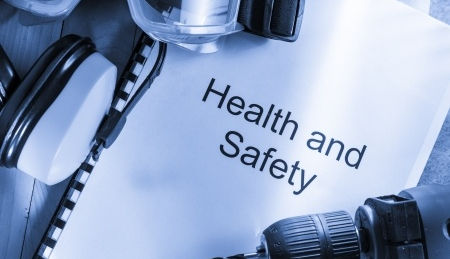
ISO 45001 (OHSAS 18001)
ISO 45001 published on 12 March 2018. It is the first globally developed standard for health and safety management system which reflects current safety management trends and techniques and eventually replace up to 24 national safety standards around the world including OHSAS 18001.
The Benefits
ISO 45001 is an opportunity for organisations to benchmark their OH&S management system and ensure that they are implementing accepted control systems. The new standard has an increased focus on improving occupational health as well as safety performance, therefore, reducing risks across the board.
Benefits of implementation of the standard may include:
-
Reduction of work related injuries, ill health and death;
-
Eliminating or minimising OH&S risks;
-
Improvements in OH&S performance and effectiveness;
-
Demonstrating corporate responsibility and meeting supply chain requirements;
-
Protection of brand reputation; and
-
Motivating and engaging staff through consultation and participation.
Whilst the key aim of ISO 45001 is clearly the protection of employees and other individuals, adopting the standard will bring commercial benefit. A streamlined and well-managed health and safety system can reduce inefficiencies and costs in the system, and helps to make sure that things are done right the first time of trying. In addition, companies that invite tenders for work now commonly ask for details of any accreditations held - in high risk sectors, failure to hold accreditations can prevent access to tenders entirely.

SS 506 series of standards covering OSH management are intended to provide organisations with the elements of an effective OSH management system that can be integrated with other management requirements and help organisations achieve OSH and economic objectives.
These standards, like other International Standards, are not intended to be used to create non-tariff trade barriers or to increase or change an organisation’s legal obligations.
This SS 506 Standard specifies requirements for an OSH management system to enable an organisation to develop and implement a policy and objectives which take into account legal?requirements and information about OSH risks. It is intended to apply to all types and sizes of organisations and to accommodate diverse geographical, cultural and social conditions.
SS 506 Standard contains requirements that can be objectively audited; however it does not establish absolute requirements for OSH performance beyond the commitments, in the OSH policy, to comply with applicable legal requirements and with other requirements to which the organisation subscribes, to the prevention of injury and ill health and to continual improvement. Thus, two organisations carrying out similar operations but having different OSH performance can both conform to its requirements.
SS 506 Part 1 Specification for Occupational Safety & Health (OSH) Management System (A full adoption of OHSAS 18001)
SS 506 Part 3 was developed based on Singapore Standard SS 506 Part 1 framework. Draw technical reference from MOM’s Code of Practice on Safety Management System for Chemical Industry.
A systematic way of managing safety & health in the chemical industry by controlling
-
the Occupational Safety and Health risks
-
Process Safety through goal setting, planning and measuring of performance
-
Reference document for auditing the management of safety and health in the chemical industry
Many oil & petrochemical companies are still using the withdrawn MOM’s Code of Practice on Safety Management System for the Chemical Industry as a reference document during mandatory audits
-
A circular has been sent to the industry – Mandatory audits on or after 1 July 2009 should be based on Singapore Standard SS 506 Part 3 as a reference document.
-
Companies need only to undergo a single audit to meet the audit requirements of MOM and the National Environment Agency (NEA) (subject to the auditing service providers being approved by both agencies)
-
This single audit can also lead to SS 506 Certification or OHSAS 18001 Certification
Key Benefits:
-
Reduce risk
-
Improved safety levels by controlling hazards and risks
-
Better management of health and safety risks, now and in the future
-
Gain competitive advantage
-
Demonstrate your commitment to health and safety to stakeholders
-
Improve overall performance
-
Underline your commitment to an innovative and forward thinking approach
-
Improved operational efficiency through accident management reduction and reduction in downtime
-
Reduced costs for insurance premiums, compensation or penalties for breach of legislation.
-
A positive response from customers who want to deal with an organisation with a proven health and safety track record.

